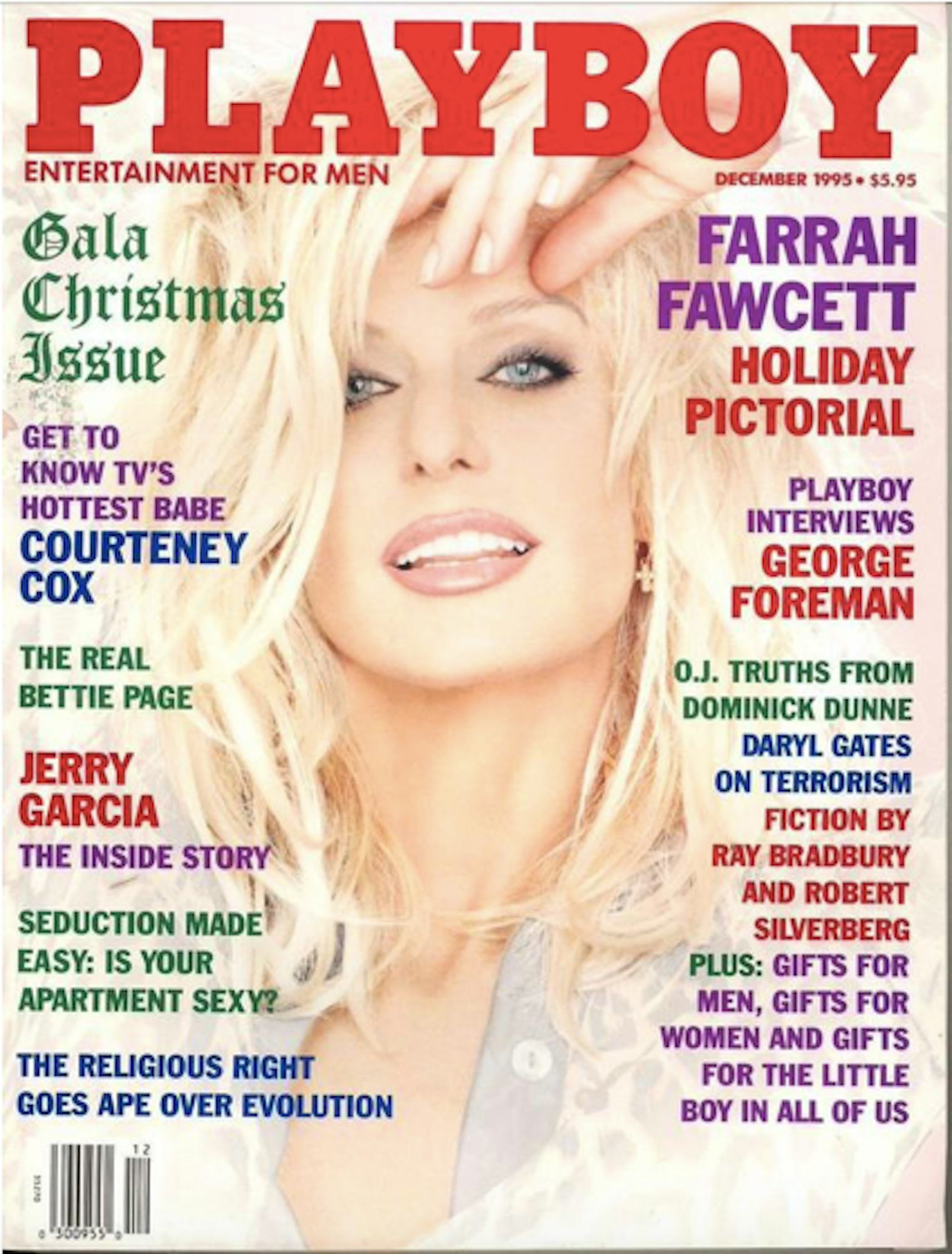The Enduring Legacy Of Playboy Playmates
From the moment Hugh Hefner launched Playboy magazine in 1953, featuring Marilyn Monroe as its inaugural "Sweetheart of the Month," the concept of the "Playmate" became an indelible part of American popular culture. These women, chosen for their beauty and charisma, were thrust into the national spotlight, embodying a specific ideal of glamour and liberation that captivated millions. The journey of all Playboy Playmates, collectively, represents a fascinating chapter in media history, reflecting societal shifts, evolving perceptions of femininity, and the complex interplay between celebrity, image, and individual agency.
Beyond the iconic centerfolds, the women who graced Playboy's pages often embarked on diverse and sometimes surprising life paths. Their stories are not merely about posing for photographs; they are narratives of ambition, reinvention, and the profound impact of sudden fame. This article delves into the multifaceted world of the Playboy Playmates, exploring their cultural significance, the opportunities and challenges they faced, and their lasting influence on entertainment, fashion, and the broader social landscape.
Table of Contents
- More Than Just a Centerfold: Defining the Playmate
- A Cultural Phenomenon: The Rise of Playboy and Its Stars
- From Pin-Up to Public Figure: Playmates in the Spotlight
- The Impact on Pop Culture: Fashion, Film, and Music
- The Digital Age: A New Era for Visibility
- Understanding the Playmate Phenomenon: A Deeper Look
- Conclusion: The Enduring Allure
More Than Just a Centerfold: Defining the Playmate
The term "Playmate" wasn't merely a title; it was a carefully constructed brand identity. Hugh Hefner envisioned these women as the embodiment of the "Playboy philosophy" – a celebration of sophisticated leisure, intellectual curiosity, and uninhibited sensuality. Being selected as a Playmate involved more than just physical attractiveness; it required a certain charm, an engaging personality, and often, an aspirational quality that resonated with the magazine's readership. From the outset, Playboy sought to elevate its models beyond mere pinups, portraying them as intelligent, independent women who enjoyed life's finer things. This was a deliberate contrast to the more overtly sexualized imagery found in other men's magazines of the era.
The process of becoming a Playmate was rigorous, involving interviews, extensive photo shoots, and a vetting process that considered not just looks but also background and aspirations. For many, it was a gateway to opportunities they might not have otherwise encountered. The exposure in a magazine with millions of subscribers could open doors to acting careers, modeling contracts, or even entrepreneurial ventures. Above all, it granted them a level of recognition that few could achieve overnight.
A Cultural Phenomenon: The Rise of Playboy and Its Stars
Playboy magazine, and by extension, its Playmates, emerged during a pivotal time in American history. The post-war boom brought with it new freedoms and a burgeoning consumer culture. Playboy positioned itself as a sophisticated guide to this new lifestyle, offering articles on politics, literature, and current events alongside its iconic pictorials. The Playmates became the visual representation of this aspirational world, a symbol of a more relaxed, hedonistic, yet refined masculinity and the women who inhabited it.
The magazine's influence grew exponentially throughout the 1960s and 70s, making its Playmates household names. Their images were not confined to the magazine's pages; they appeared in advertisements, on television shows, and at glamorous events, including those held at the legendary Playboy Mansion. The public's fascination with these women was immense, fueled by a combination of curiosity, admiration, and sometimes, controversy. After all, Playboy was often at the forefront of cultural debates surrounding sexuality, censorship, and women's roles.
The Golden Age and Beyond: Evolving Roles
During what is often referred to as Playboy's "golden age," the Playmates were presented as accessible fantasies, yet also as women with depth and personality. Each Playmate of the Month (PMOM) received a detailed biographical write-up, revealing their hobbies, ambitions, and favorite things. This biographical approach aimed to humanize them, making them relatable despite their idealized appearance. As decades passed, the role of the Playmate continued to evolve, reflecting changing societal norms and the magazine's own attempts to stay relevant. From the classic pin-up look of the 50s and 60s to the more athletic and diverse representations of later years, all Playboy Playmates mirrored the shifting ideals of beauty and female empowerment.
From Pin-Up to Public Figure: Playmates in the Spotlight
For many Playmates, their appearance in the magazine was just the beginning. The exposure provided a launchpad for careers in various fields. Actresses like Jayne Mansfield, Dorothy Stratten, and Pamela Anderson all had significant ties to Playboy, using their Playmate status as a stepping stone to Hollywood. Others transitioned into successful modeling careers, television presenting, or even music. The "Playmate" title often preceded their names in media mentions, serving as an instant identifier and a source of both recognition and, at times, typecasting.
The life of a Playmate was often under intense public scrutiny. Their personal lives, relationships, and subsequent career choices were frequently discussed in tabloids and mainstream media. This constant evaluation, from all observers, meant that their public image was not entirely their own, but rather a blend of personal reality and media construction. It wasn't surprising at all that many developed a shrewd understanding of public relations and brand management, long before these terms became common parlance.
Here's a generalized look at the typical journey and attributes of a Playboy Playmate:
| Attribute/Phase | Description |
|---|---|
| Selection Criteria | Beyond physical beauty, often sought charisma, intelligence, and a "girl-next-door" appeal mixed with sophistication. |
| Initial Exposure | Featured as Playmate of the Month (PMOM) with a pictorial and biographical write-up in Playboy magazine. |
| Public Engagements | Appearances at Playboy Mansion events, club openings, media interviews, and promotional tours. |
| Career Trajectories | Many pursued acting, modeling, television hosting, music, entrepreneurship, or philanthropy. |
| Public Perception | Varied from admiration and aspirational status to controversy and objectification, depending on societal views. |
| Challenges Faced | Typecasting, media scrutiny, privacy issues, and the struggle to transition beyond the "Playmate" label. |
| Legacy | Contributed to pop culture, influenced fashion and beauty standards, and often used their platform for various causes. |
Beyond the Mansion: Entrepreneurship and Activism
While some Playmates leveraged their fame for traditional entertainment careers, others forged unique paths. Many became successful entrepreneurs, launching businesses ranging from fashion lines to beauty products. A significant number also became advocates and philanthropists, using their platform to raise awareness for various causes, from animal rights to health initiatives. This demonstrated that their influence extended far beyond the pages of the magazine, showcasing a resilience and drive that often went unacknowledged by casual observers. They proved that the "that's all" perception of their role was often a superficial one, as their contributions to society were diverse and meaningful.
The Impact on Pop Culture: Fashion, Film, and Music
The aesthetic associated with Playboy and its Playmates permeated various aspects of pop culture. The iconic bunny costume became a recognizable symbol, influencing Halloween costumes, fashion trends, and even high-end designer collections. The Playmates themselves, with their carefully styled hair, makeup, and attire, set beauty and fashion trends for decades. Their presence in films and television shows, whether as guest stars or leading ladies, further cemented their place in the entertainment landscape.
In music, Playmates often appeared in music videos, graced album covers, or even pursued singing careers themselves. The association with Playboy lent an aura of glamour and rebellion that resonated with the burgeoning rock and pop scenes. The magazine's interviews with musicians and its regular features on music trends also ensured that the Playmates were part of a broader cultural conversation that transcended mere visual appeal. The collective image of all Playboy Playmates contributed to a distinct cultural aesthetic that is still recognizable today.
Challenging Perceptions: Agency and Empowerment
The role of the Playmate has always been a subject of debate, particularly regarding questions of agency and empowerment. Critics often viewed the Playmates as symbols of objectification, while proponents argued that the magazine offered women a platform for financial independence, celebrity, and a degree of sexual liberation. Many former Playmates themselves have offered varied perspectives, with some expressing gratitude for the opportunities, and others reflecting on the challenges and pressures they faced.
Understanding this duality is crucial. For some, it was a conscious choice and a pathway to self-expression; for others, the long-term implications of their public image proved complex. The narrative surrounding all Playboy Playmates is therefore not monolithic but a rich tapestry of individual experiences, triumphs, and struggles, all set against the backdrop of changing feminist discourse and media representation.
The Digital Age: A New Era for Visibility
With the advent of the internet and social media, the landscape for public figures, including former Playmates, underwent a dramatic transformation. The digital age provided new avenues for visibility, allowing Playmates to connect directly with their fans, share their current projects, and control their narratives to a greater extent than ever before. Websites, blogs, and social media platforms became powerful tools for self-promotion and brand building, bypassing traditional media gatekeepers.
This shift also meant that the public's access to information about former Playmates became instantaneous. Historical archives, interviews, and career retrospectives are now readily available, offering a comprehensive look at their journeys. The ability to share their stories in their own words has added new layers of depth and nuance to the collective understanding of what it meant to be a Playmate. This era allowed many to redefine their public image and showcase facets of their lives that were previously unseen.
The Legacy Continues: Influence on Modern Media
Even as Playboy magazine transitioned away from its traditional print format and evolved its content, the legacy of the Playmates endures. Their impact can still be seen in various forms of modern media, from reality television shows featuring aspiring models to the influencer culture on platforms like Instagram, where individuals curate and monetize their personal image. The concept of building a brand around beauty and lifestyle, pioneered in part by Playboy, is now a cornerstone of the digital economy.
The stories of all Playboy Playmates continue to fascinate and inspire, prompting discussions about beauty standards, celebrity culture, and the complexities of public identity. They represent a unique cultural phenomenon that shaped, and was shaped by, the times in which they lived, leaving an indelible mark on the collective consciousness.
Understanding the Playmate Phenomenon: A Deeper Look
To truly understand the Playmate phenomenon, one must look beyond the surface. It's a story deeply intertwined with American social history, the sexual revolution, and the evolving role of women in the public sphere. While often controversial, the Playmates, collectively, became a powerful symbol of a particular era, embodying aspirations of freedom, glamour, and a certain kind of modern femininity.
Their impact wasn't just visual; it was cultural. They influenced fashion, challenged conventional notions of modesty, and opened doors for women in entertainment and media. The debates surrounding them, whether about empowerment or exploitation, reflect broader societal conversations that continue to this day. By examining the lives and careers of all Playboy Playmates, we gain valuable insights into the complexities of celebrity, identity, and the enduring power of an image.
Conclusion: The Enduring Allure
The story of the Playboy Playmates is far more intricate than a simple collection of photographs. It is a narrative of cultural impact, individual journeys, and the powerful role media plays in shaping perceptions. From their initial emergence as symbols of a new era of liberation to their diverse post-Playboy careers, these women left an undeniable mark on popular culture. Their legacy continues to be debated, celebrated, and analyzed, underscoring their enduring significance.
We hope this exploration has offered a deeper understanding of the Playmate phenomenon and its place in history. What are your thoughts on the cultural impact of the Playmates? Share your perspectives in the comments below, or explore more of our articles on cultural history and media trends!

9 Iconic 'Playboy' Centerfolds From What Are Now The Magazine's "Nude

Top 10 Most Unforgettable Playboy Playmates Of All Time

Playboy Centerfold Playmate. Marianne Gravatte POSTER | Etsy